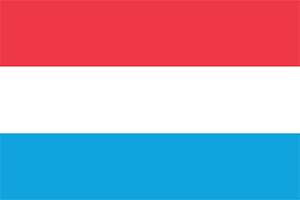Luxembourg - Country Background Information
- Describing the forms of education in the country
- Identifying an ‘inclusive setting’ in the country
- What an ‘official decision of SEN’ means in the country
- What ‘out-of-education’ means in the country
The EASIE data collection covers all recognised forms of education at ISCED levels 02, 1, 2 and 3.
This means any type of education organised by or approved by any recognised educational provider in the public or private sector: municipality, local or regional educational provider from the public or private sector, working with/for ministries responsible for education and areas such as health, social, welfare, labour, justice, etc.
4–16
What are the typical age ranges for the ISCED levels?
| ISCED LEVEL 02 | ISCED LEVEL 1 | ISCED LEVEL 2 | ISCED LEVEL 3 |
|---|---|---|---|
| 3-6 | 6-12 | 12-15 | 15-19 |
Data for private sector education is provided in data table 1. Official decisions of SEN don’t apply to private sector education.
The data provided in table 1 covers recognised forms of home schooling. However, for ISCED 3, only learners up until the mandatory school age of 16 are taken into account.
In the EASIE data collection, an inclusive setting is operationally defined as:
A recognised form of education where the child/learner follows education in mainstream classes alongside their peers for the largest part – 80% or more – of the school week.
The 80% time placement benchmark clearly indicates that a child/learner is educated in a mainstream class for the majority of their school week. At the same time, it acknowledges possibilities for small group or one-to-one withdrawal for limited periods of time (i.e. 20% or one day a week).
Very few participating countries can provide exact data on children/learners spending 80% of their time in a mainstream group/class. However, all countries can apply one of three agreed proxies that provide an approximation to this benchmark:
- Placement in a mainstream class implies over 80% or more
- Data is available on the number of hours of support allocated to a child/learner
- Placement in a mainstream class implies over 50% or more.
In the EASIE data collection, the agreed operational definition is:
An official decision leads to a child/learner being recognised as eligible for additional educational support to meet their learning needs.
Countries may have different types of official decision, but for all official decisions:
- There has been some form of educational assessment procedure involving different people. This procedure may involve the child/learner, parents, school-based team members, as well as professionals from multi-disciplinary teams from outside the child’s/learner’s (pre-)school.
- There is some form of legal document (plan/programme, etc.) that describes the support the child/learner is eligible to receive, which is used as the basis for decision-making.
- There is some form of regular review process of the child/learner’s needs, progress and support.
An official decision by the Commission nationale d’inclusion (CNI) (National Commission of Inclusion) leads to a child/learner being eligible for additional educational support to meet their learning needs.
- There has been an educational assessment procedure involving a multi-disciplinary team, including members from within and external to the child’s/learner’s (pre-)school
- There is a legal document describing the support a child/learner is eligible to receive and which is used as a basis for future planning
- The official decision is subject to a formal regular review process.
Children with an official decision of the national inclusion commission (Commission nationale d’inclusion – CNI) can benefit from an individualised education plan.
The records for learners with an official decision from the CNI are regularly reviewed, imperatively at important transition points during their school career, namely at the ages of 12 and 16.
Within the EASIE data collection, specific questions examine children/learners who are out of education. This means children/learners who should, by law, be in some form of recognised education, but who are out of any form of recognised education. A recognised form of education is any type of education organised by or approved by any recognised educational provider in the public or private sector.
Not applicable
Due to the size and the language diversity, some national citizens attend school abroad and some children from abroad attend school in Luxembourg. For this reason, a correlation between the population in certain age groups and the number of children/learners attending school in the country does not hold.
Moreover, there are non-mandatory schooling options for children aged 3. Compulsory education starts at the age of 4. For this reason, the number of children enrolled in a form of recognised education in ISCED 02 does not match the total population in that age group.
